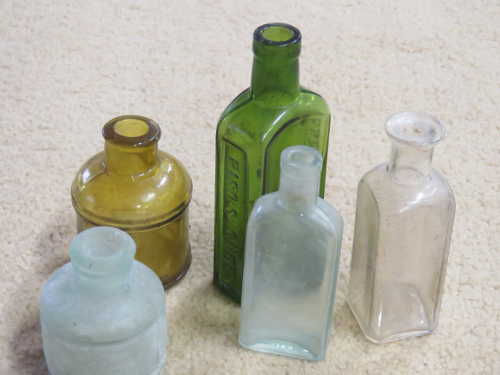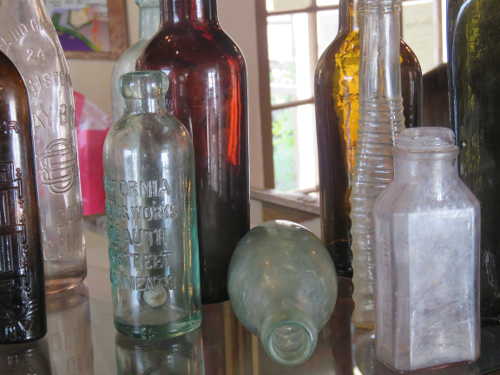
LAKE COUNTY, Calif. – Old bottles hold more than their intended contents.
Collectors, who enjoy bottles' unique artisanship, understand that historic bottles have personality and secrets galore if you know how to find them.
Believe it or not, some of the very first bottles in the world were created in Asia, in approximately 100 BC, and here in the United States glass bottles and jars were produced in the 1600s with the creation of the Jamestown glass liquefying process in their early furnaces.
The making of glass bottles became even more prevalent when the glass bottle-blowing industry began in the 1880s.
The oldest of the old bottles were formed by melting glass, and then dunking a clay structure or mold, and, finally, when cool, breaking out the fragments of clay for the end product – a hollow vessel.
Archaeologists and bottle collectors have learned to identify how, when and where a particular bottle was produced by the bottle's identifying markings on the bottom of the vessel.
Another important means to determine that information can be found in the type of bottle closure, or cap.
The first bottles were stopped up with wax, then came corks, and finally, various kinds of lids and stoppers were put to use.
Archaeologists state that although you can determine a bottle's age within 10 to 15 years, it is often difficult to pinpoint its exact age accurately.
This could stem from the bottle having been recycled into use by different companies when the newer company may have relabeled a bottle for its new use.
There are, however many diagnostic tools to date a bottle to determine closely, its age range.
There is a "bottle dating key" developed by T. Stell Newman in 1970 that is very useful, and can be viewed as a link on the Society for Historical Archaeology's Web site.

Some bottle-age indicators that stand out to historians include mold seams, any glass that has stuck to the bottle's base, determining if the base is smooth, noting any embossing and color variations of the bottle, to name but a few methods.
During Dr. John Parker's Fireside Chat at the Gibson Museum in Middletown, he had literally unearthed many of those secrets and surprises, then shared them with the public. His bottle talk was highly engaging.
Dr. John Parker is a local archaeologist who helped preserve part of Lake County's valuable past when Anderson Marsh State Historic Park was created.
If you haven't yet viewed the movie of the making of Anderson Marsh State Historic Park, it's a must see.
It's called "A Walk Through Time," and the team who created the video recently garnered several prestigious awards, including an Emmy Award.
Kathleen Scavone, M.A., is a retired educator, potter, writer and author of “Anderson Marsh State Historic Park: A Walking History, Prehistory, Flora, and Fauna Tour of a California State Park” and “Native Americans of Lake County.” She also formerly wrote for NASA and JPL as one of their “Solar System Ambassadors.” She was selected “Lake County Teacher of the Year, 1998-99” by the Lake County Office of Education, and chosen as one of 10 state finalists the same year by the California Department of Education.


 How to resolve AdBlock issue?
How to resolve AdBlock issue? 



